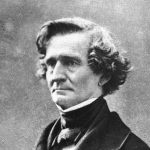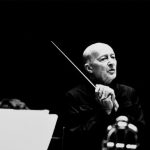The Sober Sound of Mozart
Following his move to Vienna in 1781, Wolfgang Mozart (1756-1791) achieved both musical and financial success. His opera, The Abduction from the Seraglio (1782), was very well-received, and his reputation as the finest pianist in Vienna was confirmed following a celebrated contest between himself and the Italian pianist, Muzio Clementi, at the behest of Emperor Joseph II. 
Between 1784 and 1786 Mozart composed 12 new piano concertos, Nos. 14-25, each one a masterpiece. Some were composed for his own performance, an occupation that rewarded the composer handsomely, and two for a particularly gifted young student named Barbara Ployer. 1786 saw the premier of his opera The Marriage of Figaro, which was also well-received and initiated the fruitful collaboration between Mozart and the librettist, Lorenzo da Ponte, who also penned the libretto to Don Giovanni the following year. At around this same time Mozart’s public performances as pianist became less frequent as his income from other sources increased. Unfortunately, his financial condition could not sustain his lifestyle and he would spend the last years of his life outspending what appears to have been a considerable income while borrowing money from friends, leaving his wife, Constanze to deal with the debt after his death in December of 1791.
 The years of his prodigious concerto composing were, however, a time of great success and renown. The Piano Concerto No. 24 in C minor, K. 491 comes from the same period during which he was composing the Marriage of Figaro, but it is a work of dramatically different character from the comedic farce of Figaro. Of all Mozart’s 27 piano concertos, only two were composed in minor keys, the D minor concerto, No. 20 and this one. It is perhaps not coincidental that Beethoven’s Third Piano Concerto in the same key, a key of portentous importance for Beethoven, evokes the mood of this concerto by Mozart, a work that Beethoven is known to have admired. The concerto opens in a serious mood with the orchestral theme outlining the minor chord that so characterizes the opening movement. This theme is reserved for the orchestra, the solo piano never participating in its utterance despite its frequent recurrence throughout the movement. Though the mood is predominantly sober, the piano brings some balance through elegant themes reserved for its presentation. Characteristic of many of Mozart’s late concertos, this work gives much thematic emphasis on the orchestra’s wind section, which frequently engages in interplay with piano. Following a dramatic cadenza, the movement closes in a surprisingly reserved mood, leaving us to await the slow middle movement anticipating a resolution to the lingering tension left at the end of the Allegro. The Larghetto is a model of apparent simplicity as only Mozart could create. The opening theme, an almost child-like tune, provides the bulk of the piano music and is heard in alternation with contrasting sections, led once again by the colorful winds. Relief indeed from the troubled opening movement, but the Finale returns once again to the somber minor of the Allegro. The movement takes the form of a series of variations on the theme first presented in the orchestra, here providing a platform for the soloist to display power and virtuosity as each variation builds in intensity until a break arrives in major keyed, wind band fourth variation. A sixth variation lands solidly in the key of C major prominently featuring wind instruments before shifting back to minor. A brief cadenza leads to the final variation, now in a rollicking 6/8 meter and decidedly in the original minor key ending this concerto on a note of uncommon seriousness for the genre.
The years of his prodigious concerto composing were, however, a time of great success and renown. The Piano Concerto No. 24 in C minor, K. 491 comes from the same period during which he was composing the Marriage of Figaro, but it is a work of dramatically different character from the comedic farce of Figaro. Of all Mozart’s 27 piano concertos, only two were composed in minor keys, the D minor concerto, No. 20 and this one. It is perhaps not coincidental that Beethoven’s Third Piano Concerto in the same key, a key of portentous importance for Beethoven, evokes the mood of this concerto by Mozart, a work that Beethoven is known to have admired. The concerto opens in a serious mood with the orchestral theme outlining the minor chord that so characterizes the opening movement. This theme is reserved for the orchestra, the solo piano never participating in its utterance despite its frequent recurrence throughout the movement. Though the mood is predominantly sober, the piano brings some balance through elegant themes reserved for its presentation. Characteristic of many of Mozart’s late concertos, this work gives much thematic emphasis on the orchestra’s wind section, which frequently engages in interplay with piano. Following a dramatic cadenza, the movement closes in a surprisingly reserved mood, leaving us to await the slow middle movement anticipating a resolution to the lingering tension left at the end of the Allegro. The Larghetto is a model of apparent simplicity as only Mozart could create. The opening theme, an almost child-like tune, provides the bulk of the piano music and is heard in alternation with contrasting sections, led once again by the colorful winds. Relief indeed from the troubled opening movement, but the Finale returns once again to the somber minor of the Allegro. The movement takes the form of a series of variations on the theme first presented in the orchestra, here providing a platform for the soloist to display power and virtuosity as each variation builds in intensity until a break arrives in major keyed, wind band fourth variation. A sixth variation lands solidly in the key of C major prominently featuring wind instruments before shifting back to minor. A brief cadenza leads to the final variation, now in a rollicking 6/8 meter and decidedly in the original minor key ending this concerto on a note of uncommon seriousness for the genre.









vintage louis vuitton bags
In response to the theme of the Renaissance, flat boots similar to ancient Roman gladiators appeared on the show. The leather of the shoe body is matched with the retro Roman-style winding strap, which is chic and practical to wear.